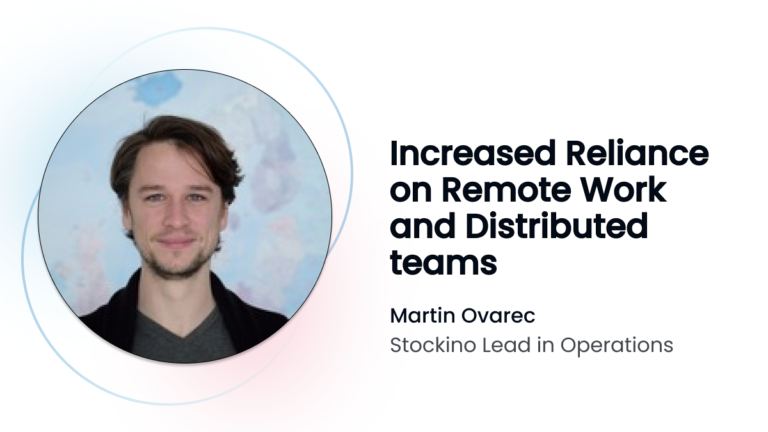With the increasing number of 21st-century jobs, the whole understanding of the workplace and workforce is changing, with the Covid pandemic just speeding up the process. The main role of this change is represented by the phenomenon of distributed teams.
One of the results of the technological boom from the beginning of the 21st century was that it gave companies digital infrastructure and tools for their teams to become more connected and effective in communication and data transfer.
As it turned out, with fast internet, cloud services, and size-reduced workstations (laptops), there was a very important by-product that is shaping the way we work.
Distributed teams or remote work are arguably the biggest change in understanding of the concept of work since the industrial revolution of the 19th century.
Throughout the article, we will discuss impacts on employees and companies and the main business drivers that are critical for increasing the adoption of distributed teams.
Why are remote teams the future of work?
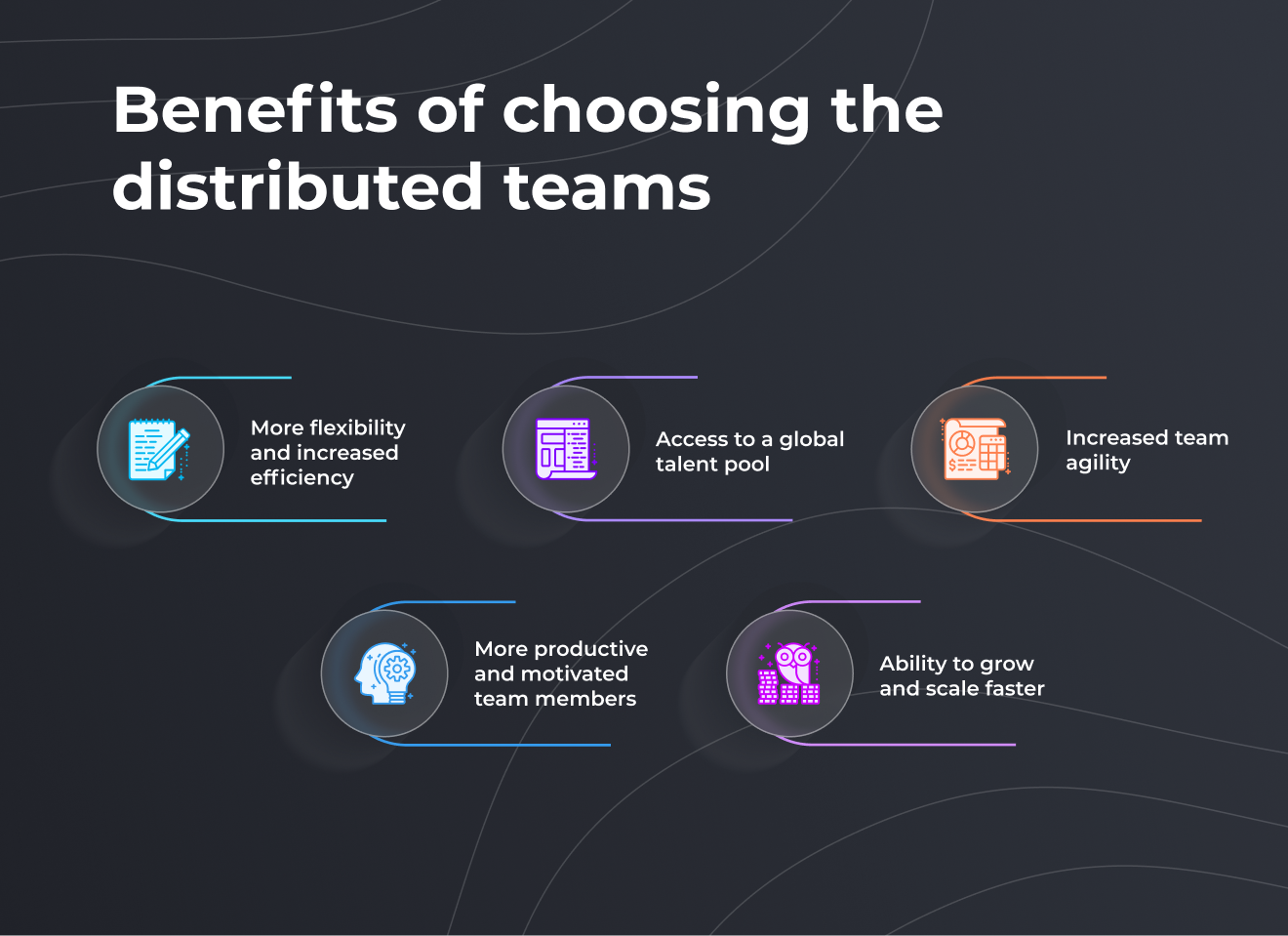
Just a few years ago distributed teams were an exception and were adopted mainly by technological companies. Most companies and organizations were cautious about losing physical control over their employees’ workdays and managers were limiting the number of days employees can work from home, not to mention other locations or countries.
So what caused managers to gain trust in employees and distributed teams to become “mainstream”? It was a Covid pandemic and a necessity.
What is now becoming more clear is that distributed teams are a comparative advantage for companies and organizations, which they can’t afford to miss out on. Such companies have incomparably more talent within their reach, more options by operating in different labor markets, and are more cost-effective prospects.
According to the statistics, 22% of the workforce will work remotely by 2025.
For instance, in case of an unfavorable situation in the labor market and a lack of Project managers, the company can extend its search to countries where there is currently a surplus of candidates compared to open positions. While doing this, not that the company just finds the right candidate, but it can also be cost saving and it is building a diverse distributed team as well.
As a result, the company is building diverse distributed teams with many advantages that it brings along. Different cultural backgrounds and thoughts are enormously driving creativity and innovation. Different experiences and perspectives on problems can bring solutions that homogenous teams will never uncover. This leads to better-informed decisions, which has a direct impact on the performance of a company.
Distributed team VS in-house team
Distributed team model presupposes hiring multiple remote engineering teams, and developers can be spread all across the globe. They can be fully or partially remote teams, and specialists could be hired from IT outsourcing companies that specialize in supplying organizations with software developers, business analytics, managers, designers, etc.
Although it may seem a biased team model with lots of nuances to handle, according to the research, 88% of entrepreneurs support it. They manage to successfully adapt agile methodologies even in such working conditions.
Building distributed team is also possible in the case of in-house teams, however, it is easier and more cost-effective with distributed teams.
Maintaining an in-house team demands much more time, resources, and infrastructure costs. The in-house team members work in the same office and have almost the same working hours. However, maintaining the in-house team also has many nuances, which should be taken into account.
Primarily, it is much more costly, there is limited talent available within the given geographical location. As the team grows, scalability becomes one of the biggest challenges.
Pros and cons of the distributed team model
To provide a better understanding of the nature of distributed teams and their value for the business, let us dwell upon the major pros and cons of the distributed team model.
Poor quality of service
Exists also concern about the poor quality of work of distributed team members, however, the increasingly competitive environment has stimulated software engineers and other remote specialists to deliver the best possible quality of services.
Broken Workflow
Even though it is challenging to implement agile software development methodologies remotely, it is quite possible if you rationally adjust your daily operations and distribute the work remotely across the members of the team. You simply need to ensure that each member of the team has an equal part of the workload and fully understands their role in the project.
Communication issues
Communication is another problematic issue. It may be difficult to organize regular meet-ups and overcome the feeling of isolation for each worker when for example your company is partially distributed. Exists a variety of tools that may help you to synchronize the team meetings and turn internal communication into a smooth and streamlined process.
Increased productivity
According to the research, during which the consulting firm surveyed 800 employers, 94% of these employers stated that work productivity was the same or higher since employees started working from home.
The wide tech talent pool
Diverse teams with various creative minds will perform 40% better than their counterparts for instance with in-house software developers. It is also much easier to acquire qualified talents and avoid local expert shortages.
Cost-effective
If you check Indeed you’ll see that a yearly developer salary in the US right now is about $102,341. In Eastern Europe, for instance, in Ukraine, the average paycheck will comprise $25,000 per year. Apart from saving considerable costs on software development, hiring remote team members allows for cutting office and infrastructure spending.
Less requirement to the office space
Another main driver of distributed teams is fewer requirements on expensive offices and equipment. Distributed teams require less office space since considerably fewer people are coming to the office.
Lower employees turnover
The study from the ADP Research Institute — titled People at Work 2022: A Global Workforce View — claims that remote team members are more optimistic (89%) than their on-premises coworkers (77%) and have higher job satisfaction rate (90%) in comparison to the office colleagues (82%).
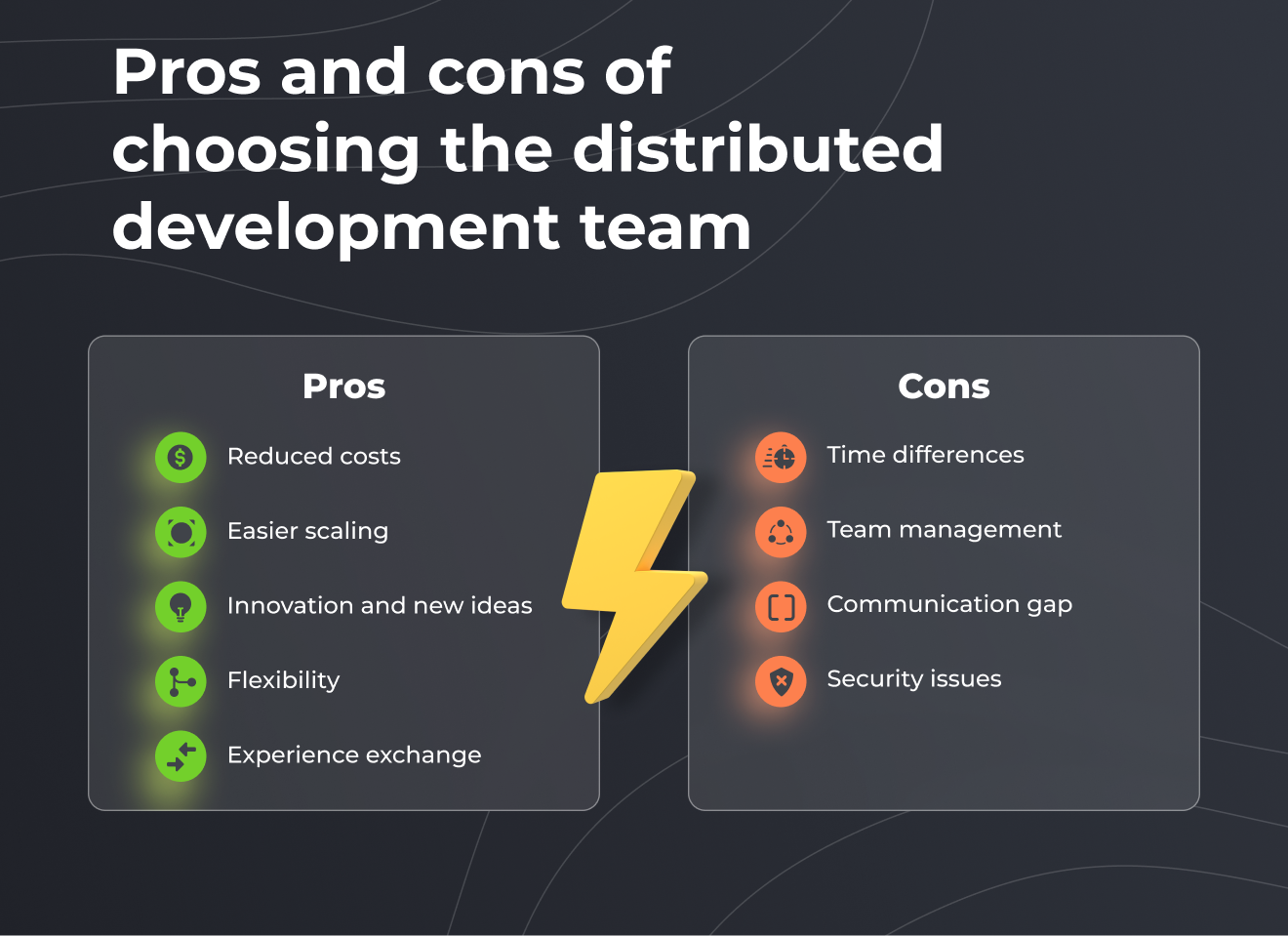
Potential risks and challenges of choosing the remote team
There are of course also potential risks related to diverse teams such as language barriers, cultural differences, biases, and slower decision-making. All these, however, can be under the right management eliminated and the advantages are outbalancing the disadvantages.
Make sure to set clear and realistic expectations. You should be ready that there always be a risk of lack of in-person communication if you hire remote workers. It can also lead to unbalanced communication and difficulties in becoming active members of the distributed team.
You may also face some entire team management challenges, such as resource allocation, and handling communication issues. In case it is difficult to ensure optimum productivity of remote employees, the company risks overloading remote workers, which inadvertently breeds a toxic working atmosphere.
However, all the challenges and risks can be mitigated by the right management of the distributed team.
Effectively managing distributed teams
After the decision to work with a distributed team is taken, you need to be sure you know all the nuances of the management of a distributed team. You also need to realize that you will face the problem that all your distributed employees will not be available at the same time, so distributed team management differs from the management of the in-house team.
The crucial thing you need to focus on is the identification of your core common hours when all the entire team members are available and can synchronize to cover all crucial questions. A client should be aware of the nuances of working with remote employees and be able to actively participate in team meetings.
When you work with a distributed team it may be also difficult to find a time slot suitable for every team member. You can perform communication asynchronously using various project management tools for remote team communication.
Daily scrums could be presented in a written form allowing remote employees to synchronize, trace the project progress, and adapt the sprint backlog in case of necessity.
Working in a distributed team requires regular confirmation that you have the same vision of the product. Regular discussions of project owner expectations and the vision of the team allow to clarify the real project goal and move the right way to achieve the desired results.
Motivation and good work rewards are also crucial aspects while managing remote workers. Reward your team members for their contribution to the project’s success and you will be surprised with the degree of motivation they will have.
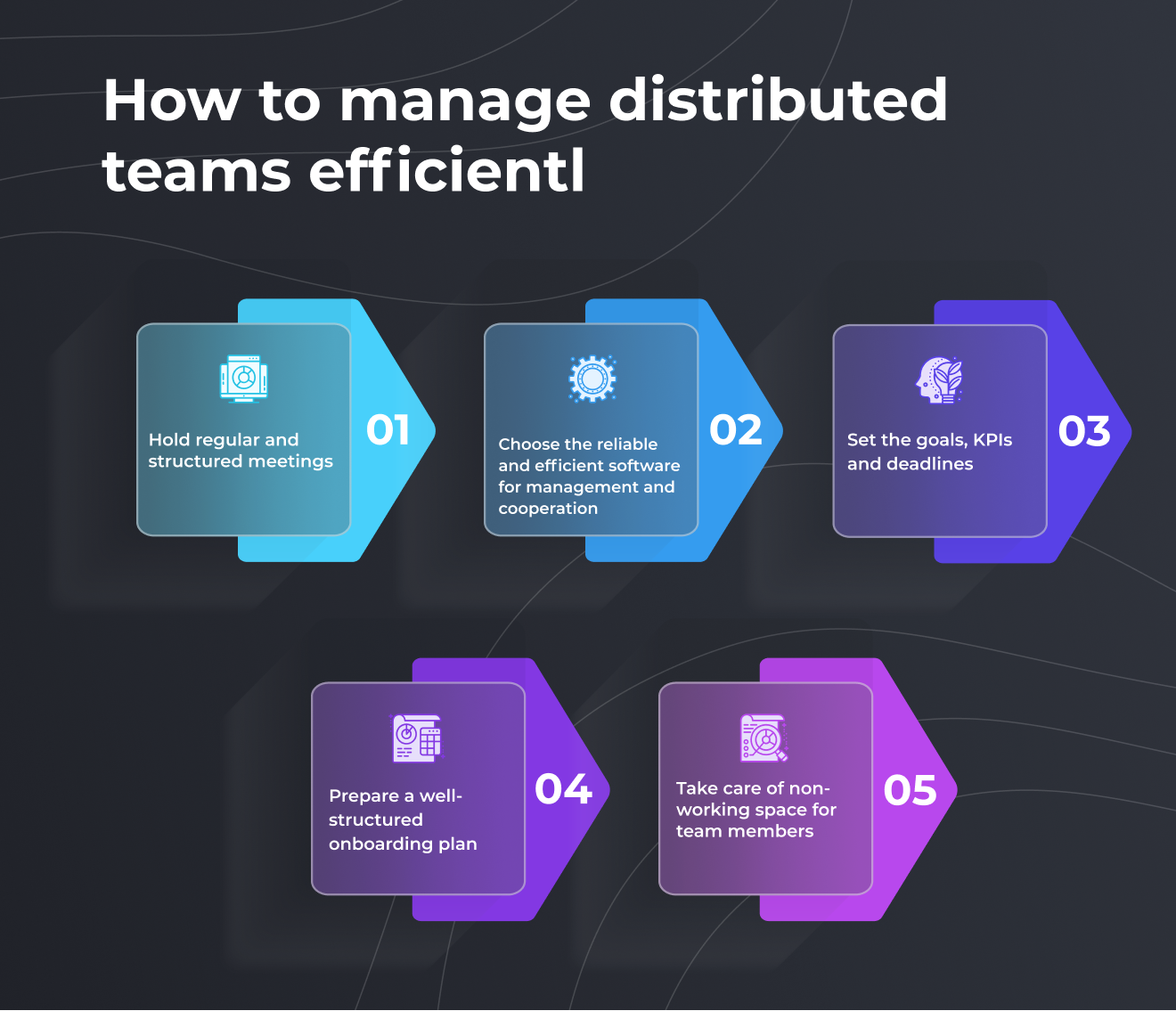
Here are some tips for helping to successfully manage distributed teams:
- Comprise the team of a suitable size and hire all the necessary specialists.
- Take care of the effective onboarding process of every team member, making sure it is structured especially for a distributed team.
- Allow remote workers to interact with each other beyond the working environment.
- Even if you have chosen remote work, you still need to ensure smooth collaboration and perform the usual working daily activities. Offer additional perks and bonuses.
- Schedule meetings, and regular daily and monthly activities to stay on the same page about the project status, product vision, additional clients’ ideas, and final project goal.
- Use the right recruitment and onboarding tools, remote work communication tools, productivity management tools.
- Focus more on a result and spot and celebrate success, so that every team member will feel valued and appreciated.
Coaching your client
One of the key aspects is the preparation of your client for cooperation. You need to let your client understand that all your efforts are aimed at sucessful project delivery and it demands continuous work, not a single action.
You need to prepare all the key stakeholders that managing a distributed team demands continuous cooperation, improvisation, wise decision making and involvement.
How do we do it at Altamira?
So how does this work in Altamira? Since the beginning of the year, Altamira has become a fully integrated organism with many people working in different parts of the world and on many other projects.
This requires extensive organizational and managerial efforts, so wecan be a successful distributed team/organization of approximately 150 people. This could not be achieved without the right tools and software that are critical.
The most used tool in Altamira is the one we use for communication – chatting, calling, and fast sharing information. Just recently we have stepped up and migrated to MS Teams, a powerful solution, which is inevitable for medium or large-sized companies.
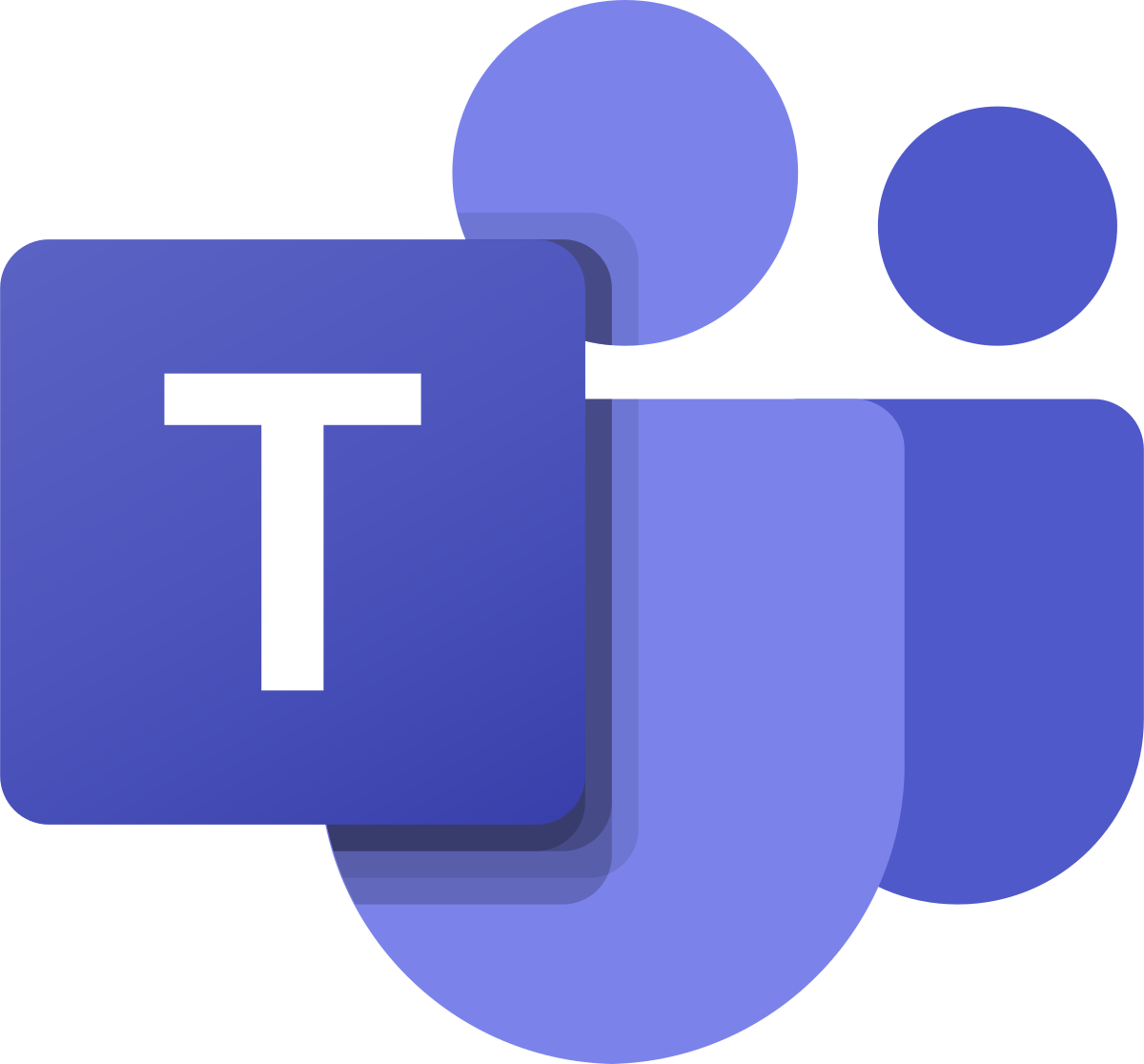
Managing projects requires a tool that keeps all crucial information/elements of projects in one place, visible, clear, and up to date, so the timeline, budget, and quality of projects are met. In Altamira, we use Atlassian products – Jira and Confluence, which are considered to be the golden standard of project management.

In Jira, the team accesses all the tasks, and related information, and works within the project workflow. For managers is important to report functionality within Jira, which gives perspective on project status, potential issues, and overall performance of the team.
Confluence on the other hand, helps the project team to keep all documentation structured and in hand, so confusion on process or misinformation are minimized. The team gathers here information and documents such as meeting notes, project vision, product requirements, files, reports, work instructions, etc.
One of the most crucial elements is to manage and plan resources in time, and track financial flow, so we can effectively have an overall view and allocate people throughout existing or planned projects.
For this purpose we use our in-house developed tool called Acreview. The tool is covering many different aspects, such as checking the team members’ availability, monitoring the working hours, and tracing the workload, we use the Acreview.
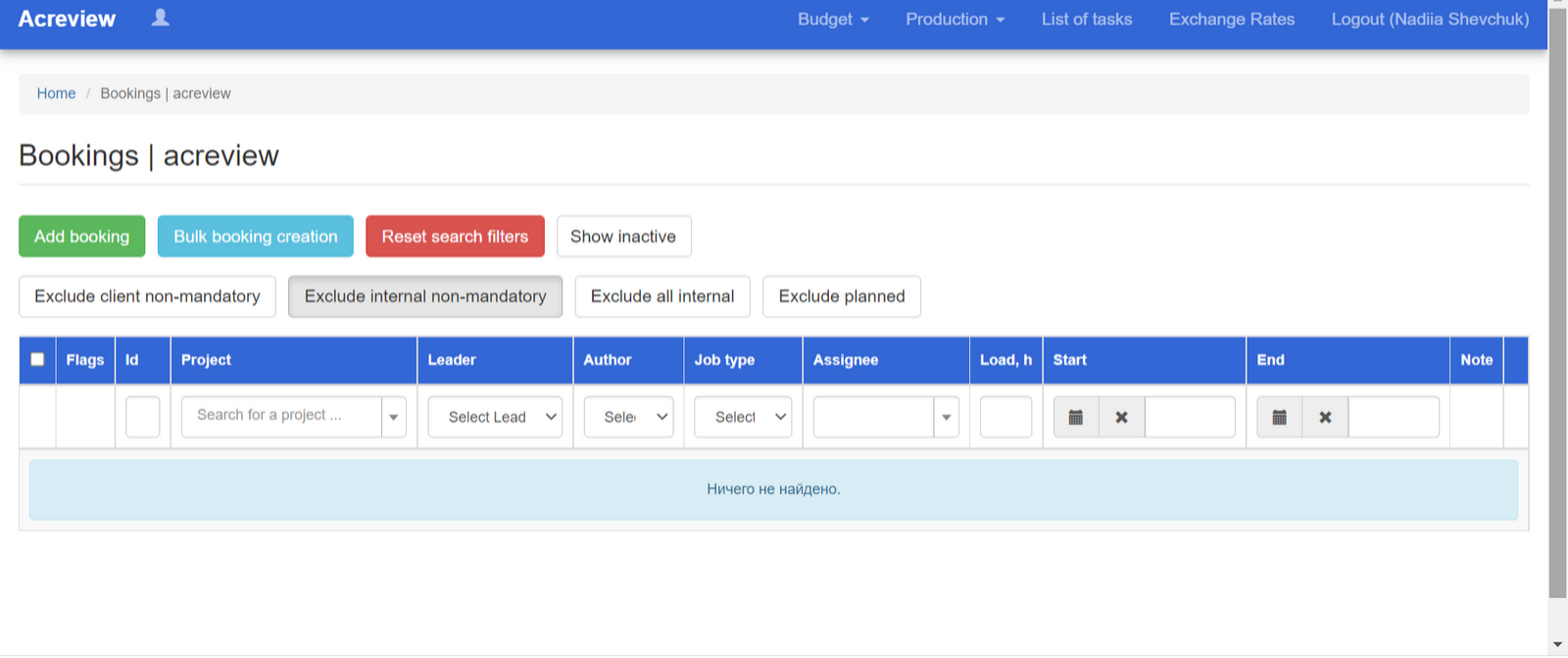
Our colleagues from the HR department have set up their “digital branch” in BambooHR software that enables employees as well as employers to track their personal information, request leaves and days off, training, benefits, organizational structure, etc.
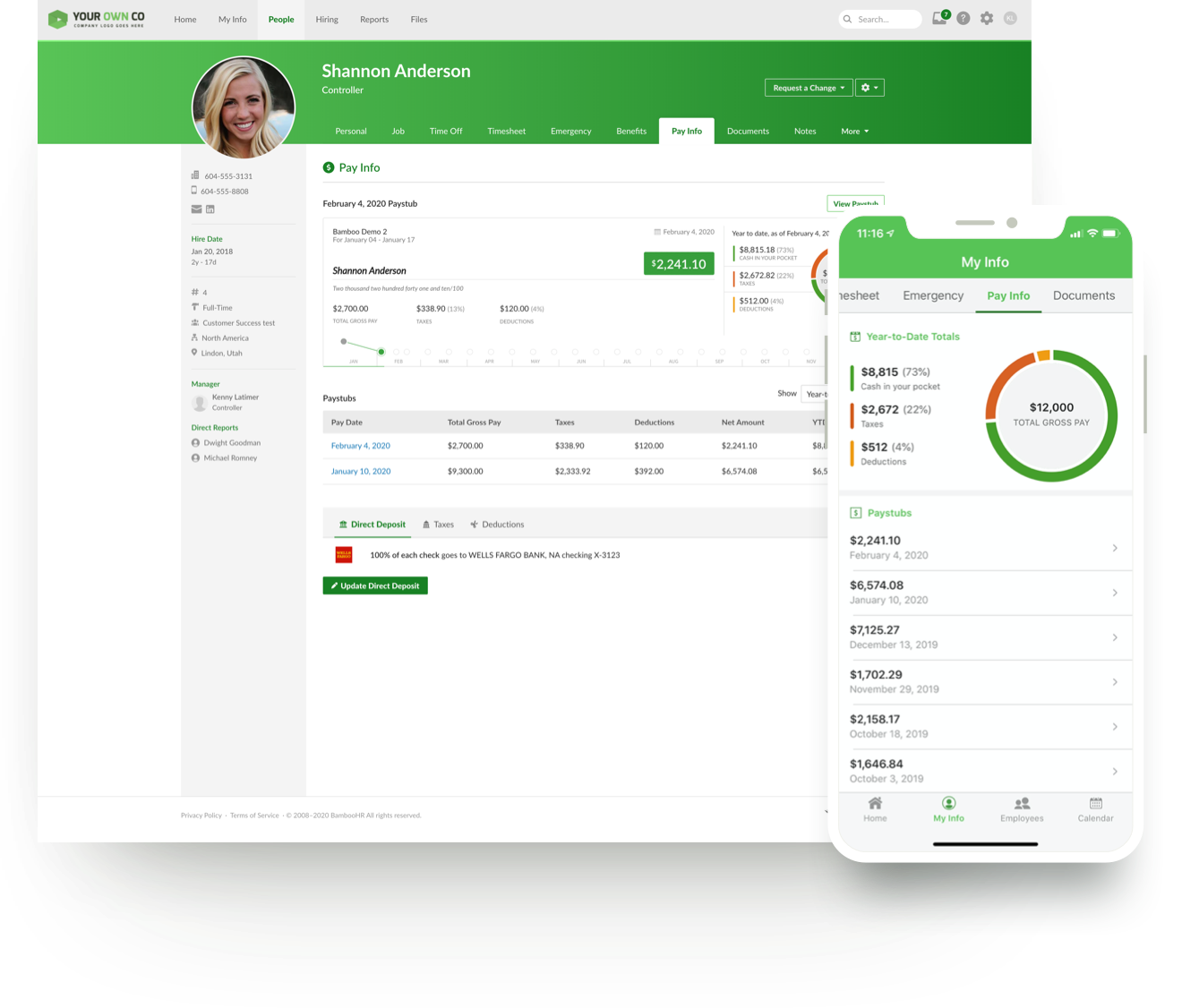
One of the overseen advantages of distributed teams is the use of tools and the fact that information is recorded, so it is traceable. In contrast, in person meetings in the office many times end up with a verbal exchange of information, which leads to the loss of that information.
Who will benefit the most from hiring remote team members?
Distributed team model for sure has many benefits and is a good choice for business. However, here is the description of cases, where the distributed team is the best choice.
Companies facing the talent gap
Hiring a remote team member allows substituting the talent gap with the experienced employee with affordable hourly rates. You will also cover the unavailable local scarcity of talent.
Startups
One of the biggest advantages of the distributed team is that it is easy to set up and the business can considerably cut costs on infrastructure. More team members work remotely and can participate in the projects without increasing the team management costs.
Team expansion
Scaling up the development team is one of the biggest challenges. The extended team model allows for expansion of the number of employees without increasing the number of seats in the office.
Companies feeling the project stagnation
It may happen, that at a certain point of the project faces the stage of stagnation. It may happen to various reasons, including the team’s demotivation. Workplace changes can allow to creation a more productive environment, adding more flexibility and agility.
Wrapping up
Several years ago remote employees were a rare phenomenon. Some skeptics said everyone would work so one day, but it appeared far away and unrealistic. Now we live in a world where success demands flexibility and adaptability. More and more project owners decide to create a remote team. There are many nuances that should be taken into account when you implement a remote team working model.
Although the traditional teams or the co-located or collocated teams consist mostly of people with physical proximity, virtual teams refer to individuals separated by physical distance but are united by a common goal.
Distributed team success depends on the efficient management of the distributed workforce. Surely you cannot control each remote employee, however, you can motivate them and establish the right company culture, preserve the work-life balance, overcome time zone differences and ensure absolute project success even if you work with virtual teams from different locations.


